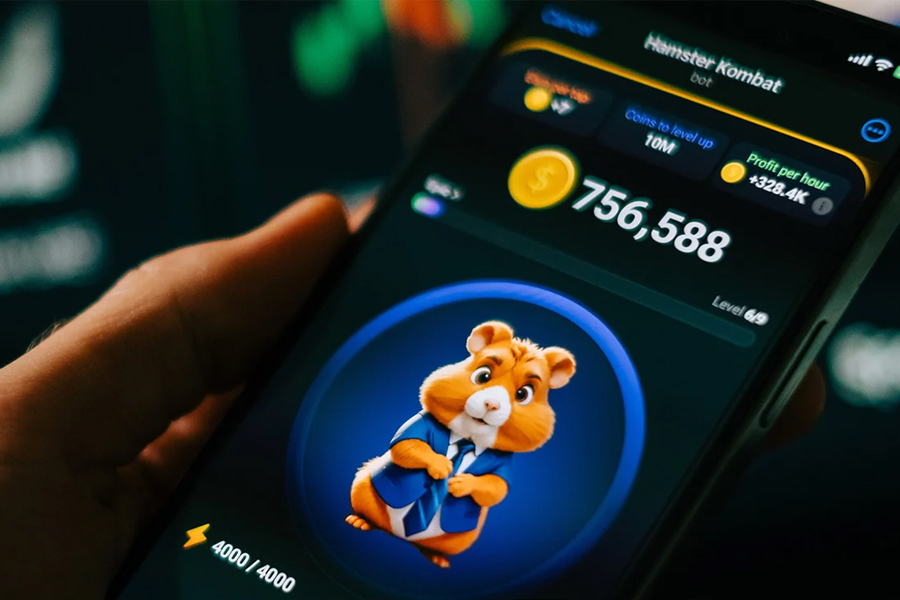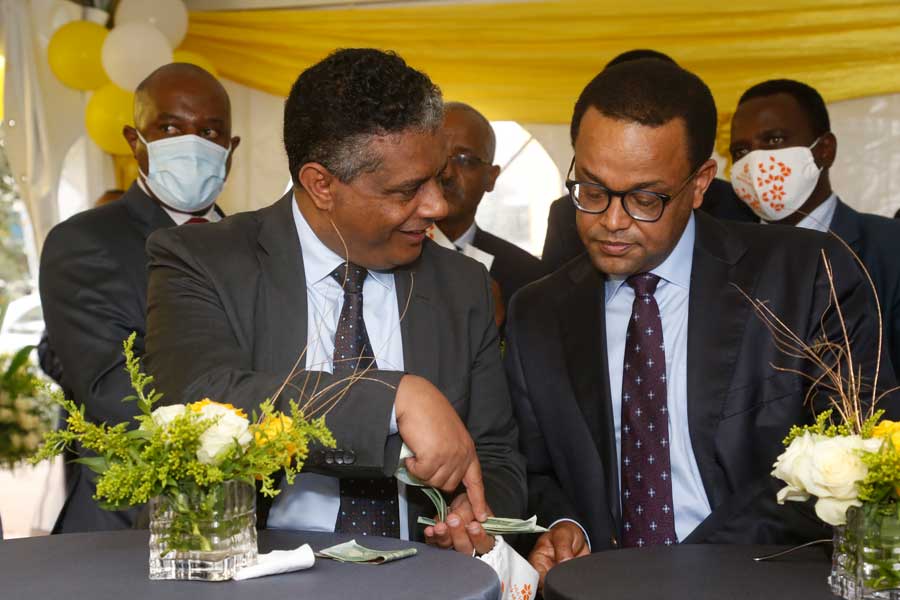
Films Review | Sep 10,2021
I recently found myself out of my depth as I uncovered the vibrant world of the virtual realm my son effortlessly navigates.
At first, I thought he was listening to music or watching a movie with his headphones until I noticed him mumbling phrases. Assuming he was talking to me I asked for clarification ready to engage in a conversation. He quickly pointed out that he was virtually playing a game with his five friends who were stationed all over Addis Abeba.
This was officially out of my league.
His response took me back in time when I spent a lot of money and time at the pioneering arcade games zone with my friends. It was stationed at the Tropicana, near the Addis Abeba Stadium during the 1990s. Our minds were blown by the slot machines feeding on the priceless coins to start the games. My favourite was Formula One (F1) which needed eight players at a time while my friends went with air force jet aerial dogfights, shooting and soccer games.
That was the highlight of the decade and we were on top of our world. Although the memory put a smile on my face, our time seemed primitive compared to what my son and his friends are doing now.
As I grapple with the generational gap, I realise the evolution of gaming mirrors broader shifts where virtual connections redefine the way we build relationships. It appears as a challenge to actively bridge the gap in an ever-evolving digital realm and appreciate the virtual realities that define the youth.
In the not-so-distant past, ordering a meal from a restaurant involved a phone call, a physical exchange of cash and perhaps a subsequent refund upon delivery. Fast forward to date, the process has evolved into a seamless transaction as mobile banking allows instant payments. The need for physical currency is eliminated while making it possible for people to perform multiple tasks without leaving their immediate surroundings.
In a world that was once bound by the limitations of physical presence and face-to-face transactions, the advent of virtual connectivity has ushered in a new era of possibilities. The evolution of technology, coupled with the seamless integration of online payment systems, has transformed the way we interact and conduct tasks.
Mundane activities are facilitated by virtual systems. From managing Wi-Fi installations with minimal human contact to resolving technical glitches remotely, companies exemplify the potential of a tech-driven, virtually connected society. The efficiency of systems that blend human and machine interactions offers a customer experience with limited physical engagement.
But this is just one dimension.
Peter Semmelhack's book, "Social Machines" sheds a different light on technology as it delves into the expanding concept of social media presence for machines. It starts with a machine offering promotional detergent contingent upon sharing the link from its display on social media. Reluctant at first but realising no harm could come of it, a lady goes on to share it on her timeline. She was quickly rewarded with a small package of detergent free of charge. With a simple social media post, the lady won a useful product and the supplier managed to make a promotion expanding its reach. The book takes a fascinating turn as machines acquire social media accounts, introducing the concept of communities that extend beyond the realm of humans.
Imagine a car or washing machine having a social media account and sending a friend request. The envisioned possibilities include real-time information sharing, human-to-machine connectivity, and machine-to-machine communication, promising a future where the boundaries between human and machine interactions blur.
The potential goes as much as influencing opinion and disrupting major events. A recent France 24 report sheds light on the looming threat of deepfakes in upcoming elections. Its magnitude to deceive the public and manipulate events through false information is a concerning aspect.
Yet, amidst the looming threats, technology is also harnessed for positive outcomes. In the same news channel, a touching account of a Chinese man finding solace through an avatar of his deceased son exemplifies the compassionate potential of Artificial Intelligence (AI). Similarly, the innovative use of technology to combat loneliness in nursing homes demonstrates the constructive impact of AI on human well-being.
From custom-made solutions for health monitoring to innovations to assist the elderly, the positive impact that technology can have on our lives is undeniable. However, the challenges posed by emerging technologies should also be acknowledged.
The rise of deepfakes is a double-edged sword, capable of both constructive and destructive applications. There is a potential for misinformation, manipulation, and ethical concerns surrounding such advancements. Alarming instances of deepfakes targeting public figures emphasise the need for stringent regulations and ethical considerations in the digital age. The ironic footage of US House Speaker Nancy Pelosi's arrest posted on Facebook is a recent deepfake incident that caught attention. An equally controversial incident emerged when the platform refused to delete the footage with Mark Zuckerberg saying the medium had ownership of its users.
Addis Abeba embarked on its own digital journey where the generational gap in embracing advancements is palpable. The younger generation's seamless integration with virtual technologies is contrasted with nostalgic recollections of arcade games in the 1990s. The evolution from primitive gaming experiences to the immersive world of virtual reality is commendable.
The concept of Augmented Reality (AR) is another frontier in the ever-evolving tech landscape. While walking across Mesqel Square one time, a small group of people and a blaring heavy-duty speaker grabbed my attention. A vendor is offering onlookers to try his immersive augmented play glasses strapped over the back of his head with goggles in the eye. One young man decided to give it a try. It was not long before he began making gestures and moves which were amusing to the rest of us until he finally gave way and buckled to his knees convulsing as if he had an electric shock.
This is a glimpse into the potential applications of virtual experiences beyond mere amusement. The incident, where a young man's virtual experience prompts laughter from onlookers, serves as a small indication of the impact virtual reality might have in the future.
As we stand at the crossroads of a rapidly advancing technological landscape, it is wise to reflect on the profound shifts in our daily lives. A nuanced understanding of the opportunities and challenges presented by social machines, virtual reality, and the interconnected future that awaits us is vital.
The societal impact of virtual connectivity and social machines is a multifaceted phenomenon. While this trend undoubtedly offers unparalleled convenience, it also prompts reflection on the importance of human connections and the potential impact on interpersonal relationships.
PUBLISHED ON
Dec 30,2023 [ VOL
24 , NO
1235]


Films Review | Sep 10,2021

View From Arada | Nov 16,2019

View From Arada | Jul 27,2024

Fortune News | Sep 27,2020

Commentaries | Jun 26,2021

View From Arada | Apr 20,2025

Radar | May 23,2020

Radar | Jun 01,2019

Exclusive Interviews | Dec 23,2023

View From Arada | Feb 12,2022

Dec 22 , 2024 . By TIZITA SHEWAFERAW
Charged with transforming colossal state-owned enterprises into modern and competitiv...

Aug 18 , 2024 . By AKSAH ITALO
Although predictable Yonas Zerihun's job in the ride-hailing service is not immune to...

Jul 28 , 2024 . By TIZITA SHEWAFERAW
Unhabitual, perhaps too many, Samuel Gebreyohannes, 38, used to occasionally enjoy a couple of beers at breakfast. However, he recently swit...

Jul 13 , 2024 . By AKSAH ITALO
Investors who rely on tractors, trucks, and field vehicles for commuting, transporting commodities, and f...

Jul 5 , 2025
Six years ago, Ethiopia was the darling of international liberal commentators. A year...

Jun 28 , 2025
Meseret Damtie, the assertive auditor general, has never been shy about naming names...

Jun 21 , 2025
A well-worn adage says, “Budget is not destiny, but it is direction.” Examining t...

Jun 14 , 2025
Yet again, the Horn of Africa is bracing for trouble. A region already frayed by wars...